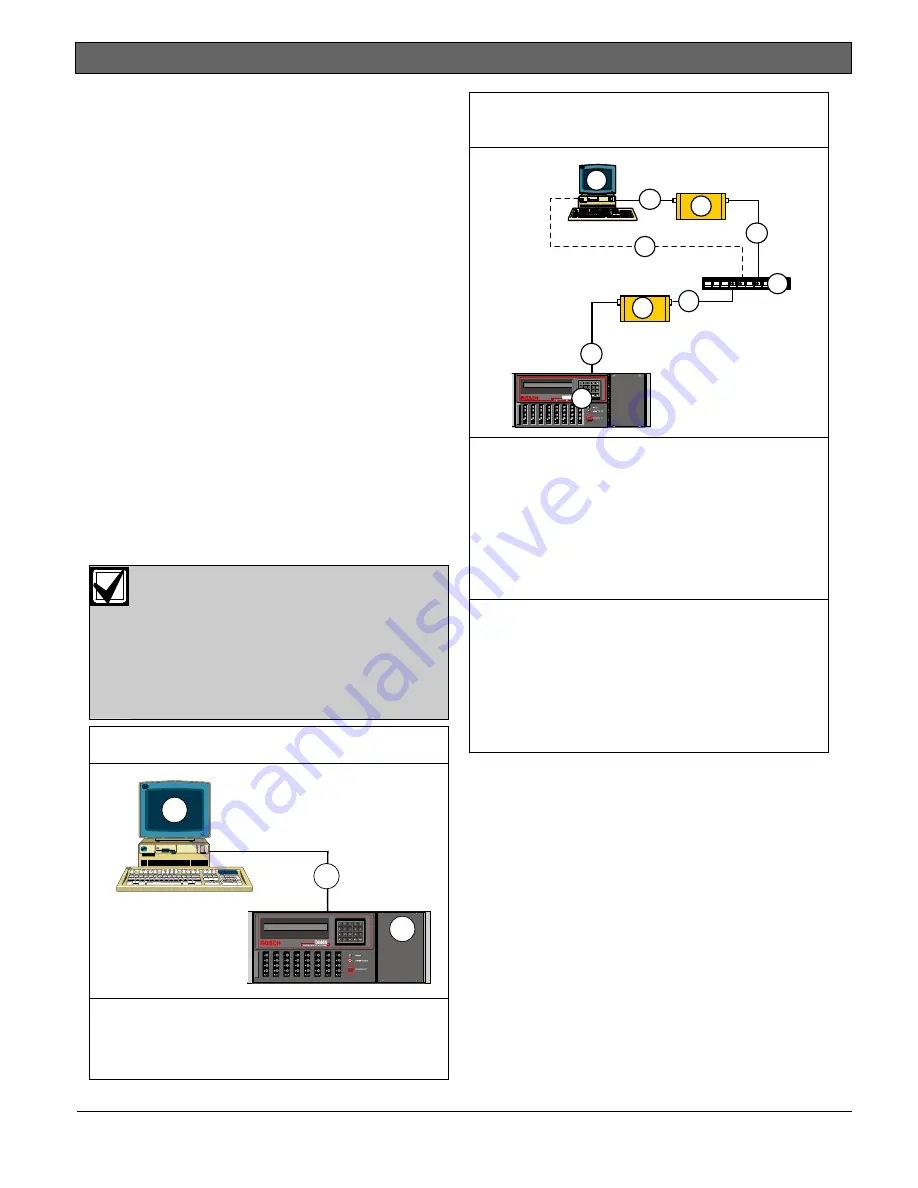
D6600
|
Operation and Installation Guide | 13.0 Using the Central Station Automation System with the D6600
26
Bosch Security Systems | 2/05 | 4998122704E
13.0 Using the Central Station
Automation System with
the D6600
If using a D6600, connect a central station automation
system computer to the COM3 port (automation
computer port) on the D6615 CPU Terminator Card
with a null-modem cable. Refer to the D6600 Computer
Interface Manual (P/N: 4998122703) for additional
information.
Standard automation reporting usually sends RS-232
serial data from the D6600’s COM3 port to a COM
port of a separate automation PC (refer to COM3
Automation Configuration in the D6600 Program Entry
Guide [P/N: 4998122702]). With no additional
programming required at the D6600 Receiver, you can
use the same serial communication across a network
connection by using D6680 Network Adapter modules
at both ends of the automation communication path.
The D6600 still sends the standard serial data, but the
D6680 Network Adapter modules communicate with
each other, convert the data back to the standard RS-
232 that the automation computer can interpret, and
transmit that data back over the network.
Some messages might go
unacknowledged (NACK) due to
increased network activities. This forces
NetCom to resend these messages. Refer
to the D6600 NetCom System Guide
(P/N: 4998122712) for complete details
on network communications and
programming.
Figure 17: D6600 System – Direct Connect
1
2
3
1 Host
PC
2 D6600
Receiver
3
Connection - Host PC COM1 Port to D6600
COM3 Port
Figure 18: D6600 System – Standard/Network
Automation
8
2
3
5
3
4
1
7
6
9
1 - Automation PC
2 - Connection - PC
COM1 to D6680
3 - D6680
4 - Connection -
D6680 to hub
5 - Hub
6 - Second D6680
7 - Connection -
D6680 to D6600
COM4
8 - D6600 Receiver
9 - Connection - Host
PC Network
Interface Card to
Hub
NOTE:
For automation packages with network capabilities : The
packet format received from the D6600 is the same as for
RS-232 reporting, except an internet protocol (IP) and user
datagram protocol (UDP) header is stamped on the packet as
the data transmitted by either standard IP or UDP structure
over the network. Automation software can easily support the
network communication by calling Socket functions, both
provided in Windows and UNIX. Using the built-in IP
connections (or sockets) available in Windows and Unix.











































